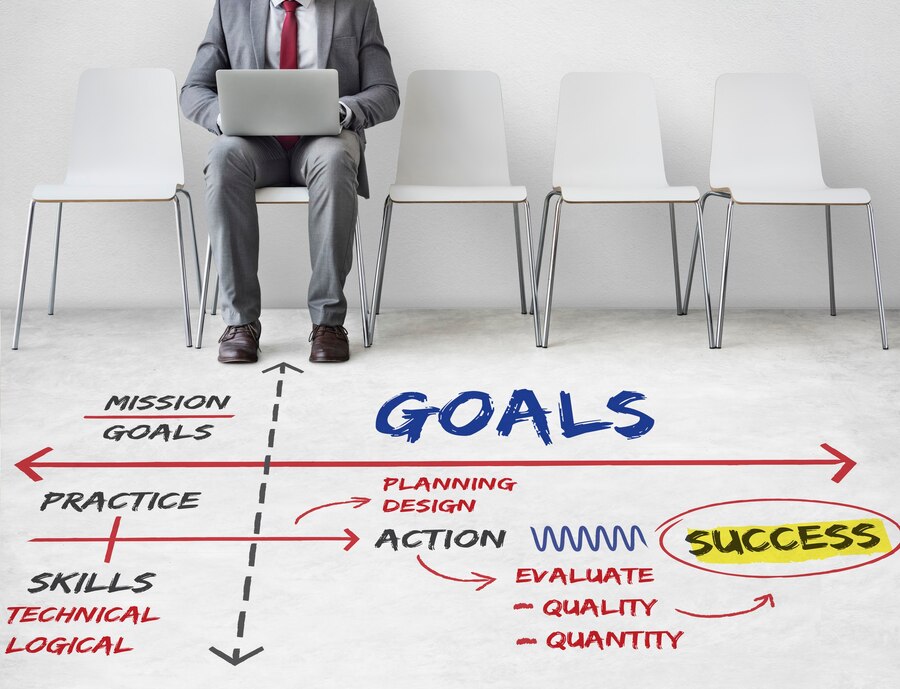Introduction:
Time is a precious resource that, if managed effectively, can be the key to unlocking your “Time Management for Personal Growth.” In this article, we will explore the art of mastering time management and provide you with ten essential tips that will not only boost your productivity but also transform your life.
1. Mastering Time Management: Your Path to Optimal Productivity

Image by Freepik
Are you constantly battling the clock, struggling to make every minute count towards your goals? Do you feel overwhelmed by the demands of your personal and professional life? Time management is the answer to your woes, and in this article, we’ll dive deep into this essential skill, offering valuable insights and strategies to help you excel at managing your time. Whether you’re a professional looking to boost your productivity or an individual eager to pursue personal growth, this guide is your roadmap to success.
2. The Importance of Time Management
Before we embark on the journey of mastering time management, let’s understand why it’s so crucial. Time management isn’t just a trendy buzzword it’s a fundamental skill that can transform your life. Effective time management isn’t just about getting more done; it’s about enhancing your overall quality of life. Here’s why it matters:
- Reduced stress: When you’re in control of your time, stress levels plummet. No more last-minute rushes or missed deadlines.
- Improved Decision-Making: With a well-structured schedule, you can make better decisions as you’re not rushed or distracted.
- Sense of Accomplishment: There’s nothing quite like the feeling of crossing tasks off your to-do list. Effective time management leads to a sense of achievement.
3. Setting Clear Goals
At the heart of time management is goal-setting. The first step is to define your short-term and long-term objectives. These objectives become the focal point around which you structure your day. Let’s break this down:
The goal-setting diagram

Image by rawpixel.com on Freepik
- Set clear goals: Begin by defining what you want to achieve, both in the short term and the long term.
- Task Prioritization: Categorize your tasks based on importance and urgency. This is where the Eisenhower Matrix comes in.
4. Task Prioritization
The Eisenhower Matrix, a brilliant tool for task prioritization, categorizes tasks into four distinct categories. By assigning tasks to these categories, you can allocate your time wisely.
The Eisenhower Matrix
- Urgent and Important: These are the tasks that demand immediate attention and are crucial to your goals. For instance, a work deadline falls into this category.
- Important but Not Urgent: These tasks contribute to your long-term success but can be planned for. Personal development activities or strategic planning fall here.
- Urgent, but Not Important: Some tasks may seem urgent but don’t directly contribute to your goals. These are often distractions that should be minimized.
- Not Urgent and Not Important: Tasks that don’t fall under the first three categories should be eliminated or postponed.
5. Effective Time Allocation
Once you’ve mastered the art of goal-setting and task prioritization, it’s time to allocate your time efficiently. We recommend using the “4 Ds” to guide you:
The 4 Ds
- Do: Tasks that are both urgent and important should be done immediately. This ensures you’re tackling what’s most critical right away.
- Defer: Important but not urgent tasks should be scheduled for later. This prevents them from slipping through the cracks.
- Delegate: If possible, delegate tasks that are urgent but not important. This frees up your time for more significant tasks.
- Delete: Tasks that are neither urgent nor important should be eliminated. This clears your schedule for more valuable activities.
By applying the 4 Ds, you ensure that your time is spent where it matters most.
6. Time-Blocking Technique
Time-blocking is a tried-and-true technique for maximizing productivity. The idea is simple: divide your day into blocks of time dedicated to specific tasks. By doing this, you can maintain focus and minimize distractions. Here’s a sample schedule:
- Morning (8:00 AM–10:30 AM): Focus on high-priority work tasks.
- Late morning (10:00 a.m.–12:00 p.m.): Reserve this time for meetings and communication.
- Lunch (12:00 PM–1:00 PM): Take a break and recharge.
- Afternoon (1:00 PM–3:00 PM): Dive into focused work.
- Late afternoon (3:00 PM–5:00 PM): tackle administrative tasks and do some strategic planning.
7. Time Management Tools
Several tools are available to assist in your time management journey:
- Calendar Apps: Tools like Google Calendar or Outlook are excellent for scheduling tasks and setting reminders.
- Task Management Software: Applications like Trello or Asana help you organize and track your tasks effectively.
- Time-Tracking Apps: Software like Toggl allows you to monitor how you spend your time, helping you identify areas for improvement.
By leveraging these tools, you can take your time management skills to the next level.
8. Practice Saying “No”
Like any skill, saying “no” gets easier with practice. Start with smaller requests and work your way up to more significant commitments. The more you practice, the more confident you’ll become.
When to Say “No”
When It Clashes with Your Values
If a request goes against your core values or beliefs, it’s essential to decline it. Staying true to your principles is more important than pleasing others.
When You’re Overwhelmed
If you’re already swamped with commitments and saying “yes” would push you over the edge, it’s perfectly acceptable to decline. Your well-being should be a top priority.
When It’s Not a Priority
Evaluate whether the request aligns with your goals and priorities. If it doesn’t, politely decline and focus on what truly matters to you.
9. Balancing Work and Life
Personal growth extends beyond work. Allocate time for leisure, hobbies, and spending time with loved ones. Achieving a balance between work and life is essential for holistic personal growth.
Also read: Unveiling the Ultimate Secrets for Eternal Happiness: 12 Ways to Embrace Life’s Simple Pleasures
10. Embracing the Present Moment
In our quest to plan for the future, we often forget to live in the present. The present moment is a gift, and we should cherish it. Practice mindfulness, savor the little joys in life, and be fully present in everything you do.
11. Quality Over Quantity
In our pursuit of productivity, we often forget that quality matters more than quantity. It’s not about how much time we spend on something; it’s about how well we use that time. Whether it’s work, relationships, or personal growth, focus on the quality of your efforts.
12. Frequently Asked Questions
Q1: How can I start with time management for personal growth?
A: Begin by setting clear goals and priorities. Identify what truly matters to you, and allocate time to those activities.
Q2: Is time blocking an effective technique?
A: Yes, time blocking can significantly enhance your productivity by dedicating specific time slots to important tasks.
Q: How can I overcome procrastination?
A: Overcoming procrastination requires self-discipline and effective time management strategies. Start with small, manageable tasks and gradually build momentum.
Q4: How can I find the right balance between work and personal life while managing my time?
A: Prioritize self-care and set boundaries. Allocate specific time slots for work and personal activities, and stick to them as much as possible.
Q4: Can spending too much time on one thing be detrimental?
A: Yes, spending excessive time on one thing can be detrimental if it hinders your overall productivity or neglects other important aspects of your life. It’s essential to strike a balance between focused work and other meaningful activities.
Q5: What role does mindfulness play in time management for personal growth?
A: Mindfulness can enhance time management by helping you stay present, reduce stress, and make intentional choices about how you use your time.
Q6: Can anyone set clear goals, or is it only for highly motivated individuals?
A: Setting clear goals is a skill that anyone can develop. It’s not limited to highly motivated individuals. In fact, setting goals can increase motivation.
Q7: What if I don’t achieve my goals? Does that mean I failed?
A: Not achieving a goal doesn’t equal failure. It’s an opportunity to learn and adjust. Sometimes, the journey itself can lead to unexpected and fulfilling outcomes.
Q8: Is it better to have one big goal or multiple smaller goals?
A: It depends on your preference and circumstances. Some people thrive with one big, overarching goal, while others find motivation in achieving multiple smaller goals.
Q9: Is it okay to use digital tools for task management?
A: Absolutely! Many digital tools, like task management apps, can help you organize and prioritize tasks efficiently.
Conclusion
In conclusion, mastering time management is not just a skill; it’s a life-changing endeavor that can improve every facet of your existence. By setting clear goals, categorizing tasks with the Eisenhower Matrix, employing the 4 Ds, and adopting the time-blocking technique, you can transform your life. Time management tools further enhance your journey towards optimal productivity.
Time is the most valuable resource we have. It’s finite and can never be replenished. But by learning to make every minute count, you’ll find yourself not only accomplishing more but also leading a less stressful and more balanced life. Take charge of your time, and watch your success soar to new heights.





